5 easy tips for setting up your fancy new TV
If you just plug it in and turn it on, you're doing it wrong.
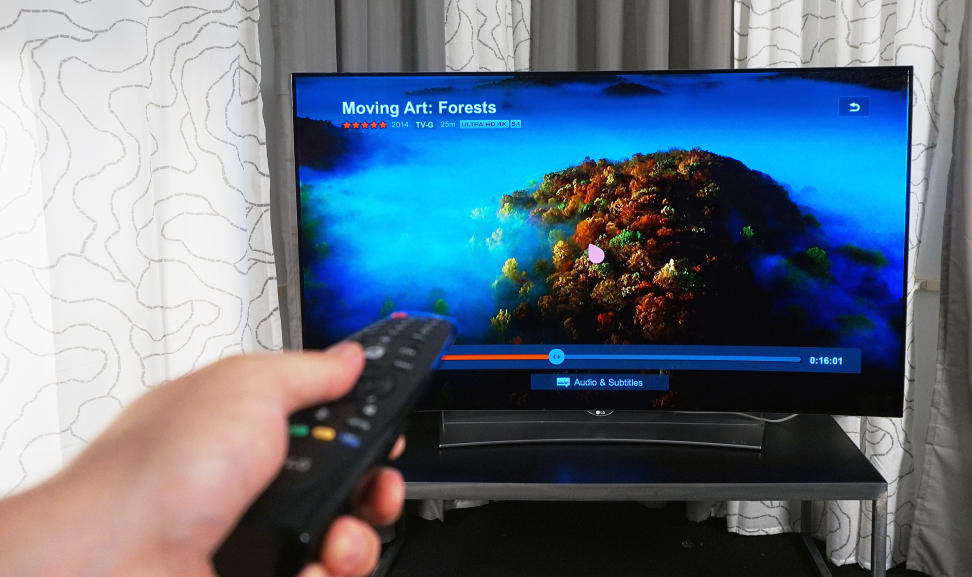 Credit:
Reviewed.com / Lee Neikirk
Credit:
Reviewed.com / Lee Neikirk
Products are chosen independently by our editors. Purchases made through our links may earn us a commission.
If that big, rectangular box by your Christmas tree turned out to be a big, rectangular TV, you're probably pretty excited. Think of how great your favorite Netflix shows or that brand-new video game are going to look on your fancy new TV!
But you shouldn't just plug the thing in, hit power on the remote, and go to town—not if you want the best experience. Here's five pretty easy things you can do right after you unbox, build, and plug in your new TV to get it looking and working best.
#1: Connect to your WiFi network—even if you aren't using smart features
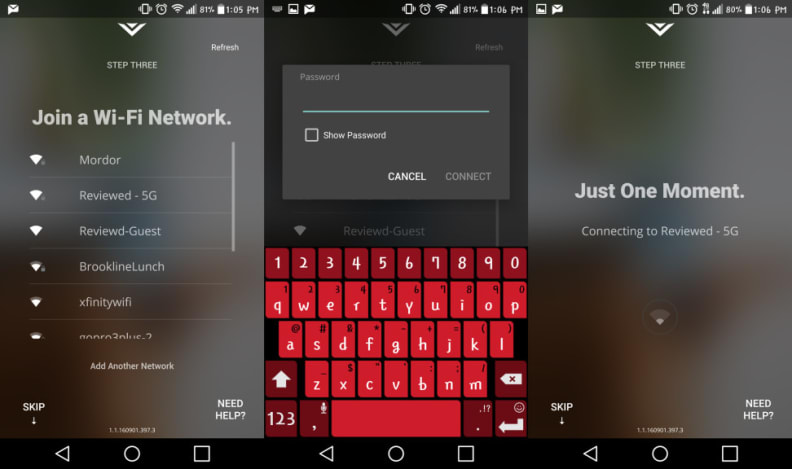
Not every TV you can buy will be a "smart TV," but by far the vast majority of them are. This means they can connect to the internet over LAN/ethernet or WiFi. While the primary function of putting your TV online is to access built-in apps like Netflix, you should still get your new TV online.
Your TV's initial setup process will almost definitely prompt you to connect to a WiFi network. Even if you're planning on using a standalone streaming device instead of built-in apps—or don't use streaming services at all—it's a good idea to get your TV online. This will allow it to automatically download firmware updates, keeping all the features working smoothly and occasionally even improving the picture quality.
#2: Change the Picture and Sound modes—the defaults aren't meant for home use
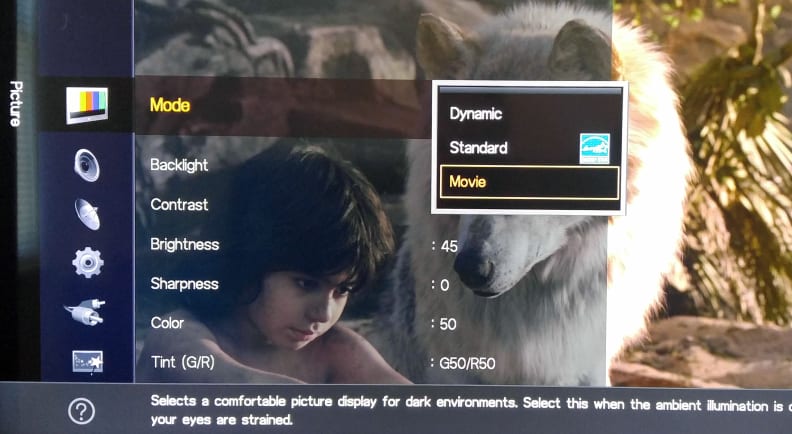
I'm gonna guess you didn't know this, but your new TV isn't set up out of the box to look and sound best in your home. Some pop out ready to shine bright on the show floor at Best Buy, and some have had their performance choked to meet EnergyStar standards, presenting with a very dim energy or eco mode.
Naturally, this isn't ideal—but neither really are "Dynamic" or "Vivid" modes. You want to look for the modes that offer the most accuracy, usually called Movie, Cinema, or Calibrated. While they may look dim, at first, compared to the out-of-the-box settings, these modes are generally much more accurate, and also tend to be better for the TV panel's overall lifespan.
You should also check out sound mode options, especially if you're wall-mounting the TV, as the speakers can sometimes be adjusted to accommodate. Both of the picture and sound settings menus are easy to track down where most TVs are concerned.
#3: Explore the menus and turn off junk—or at least know what it does
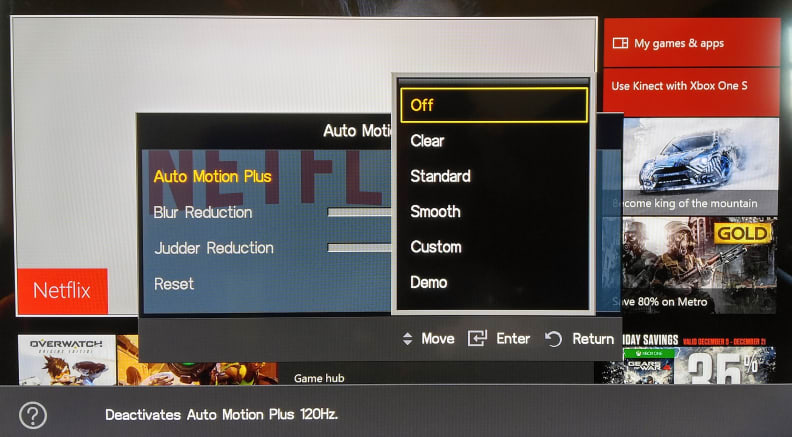
Since you're already in there changing the picture and sound modes to improve your viewing and listening experience, you should go ahead and get acclimated with the picture options. No, you don't need to know exactly what every single thing does, but there are definitely things you'll probably want to turn off.
For example, most TVs these days have some kind of motion smoothing or motion interpolation modes. While these can sometimes be useful during sports, most people find the overly smooth look to really distract during TV shows and movie content. Look for something named motion plus, cinemotion, or smooth motion, and at least watch some content with and without it to figure out if you want it or not.
#4: Go ahead and watch something—you may have to move the TV around
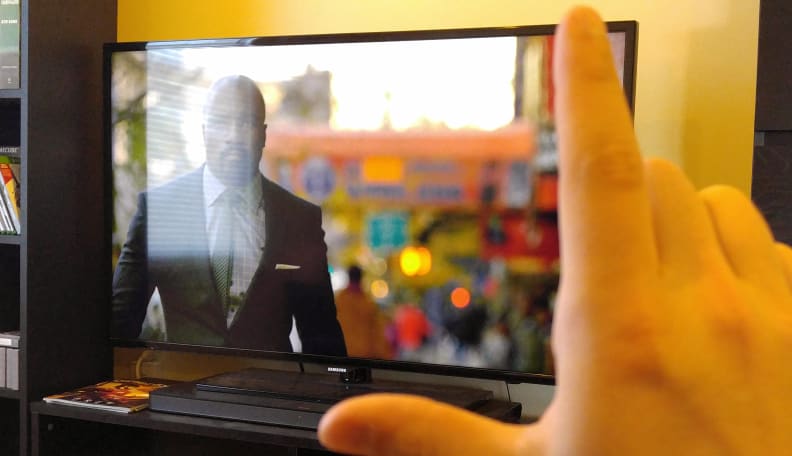
Once you have all the updates done, modes set up, and junk turned off, just sit down and watch something. Try to sit where you think you'll be sitting most of the time when you use your new TV. If you have family members, coax them into sitting where they think they'll sit. Watch a 20-minute TV show or the news, something you'll pay attention to.
Here's where you're most likely to discover problems with the TV's positioning. If there's excessive glare on the screen from windows or lamps you use often, even if it doesn't show up on brighter content like a football game, it'll annoy the heck out of you during darker, filmic content.
Likewise, if someone's spot on the couch is too far off center, the picture may simply not look as good as it could. Better to solve those problems now than right when you're in the middle of a Stranger Things binge.
#5: Finally—find some great content to watch
{{ amazon name="Star Wars: The Force Awakens", asin="B01DU0W2B6", align="right" }}
This is the fun part. Once you've got the picture set to its natural state, everyone's got a good seat, you can kick back, pop some corn, and find something awesome to watch.
If you've got a fancy new 4K/HDR TV, we already have some solid recommendations for 4K/HDR Blu-rays. Or maybe you're looking for something to binge on Netflix, and a great new video game to play?
Whatever you watch, do so knowing your TV is set up right, and everyone watching is getting the best image it can muster.


